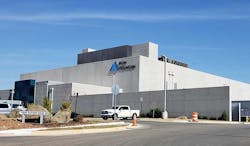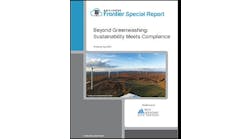Trends and Opportunities in Site Selection Today
In fact, I can’t think of a more critical differentiator than site selection. A data center’s location is the precursor to how easy or difficult it will be to deliver saleable capacity.
Every data center site needs to offer speed to market, availability of renewable power, and a desirable and attractive location for customers. That initial site selection decision sets the whole data center development course. If site selection is done poorly, it makes every downstream process more difficult, from constructability and salability to energization and renewable resources.
Making a good site selection decision is part science and part art. The science aspect comes from taking a data driven approach, particularly if you break free of the herd. The data center industry tends to have a groupthink mentality and there is comfort in numbers. But to be at the tip of the spear with new market entry, that requires an analytical and data rich approach and industry knowledge.
Factors to Consider in Site Selection
Site selection starts with the customer. It’s working backwards from the customers’ needs and requirements and building from there.
Many customer requirements are location specific, and desirability of the location is often the first factor, followed by traditional proximity to high voltage transmission, long haul fiber, water supply and return, zoning and labor.
After looking at customer requirements, you need to work your way back and ensure you can deliver quickly. You must ensure the site is in an area that has access to all the resources required to enable development. From a constructability perspective, data centers require a vast number of resources, including construction labor. It’s important to select a site that is at the intersection of those resources or that with minimal time and money those resources can be delivered to the site.
Sustainability and Site Selection
Sustainability is critical to site selection. Having access to renewable energy, being a good corporate citizen in terms of optimizing PUE and WUE, and being a good neighbor by insulating industrial noise are all important factors.
Data centers have gotten a bad reputation from the community perspective as being a resource drain, especially given the current environmental and energy concerns. But I’d argue that they are, for instance, more beneficial than traditional warehouse distribution centers. There is very little truck traffic, and while they remain resource heavy, there is a lot of investment made to drive innovation to do more with less natural resources.
The concept of energy autonomy through onsite generation is very interesting and the industry continues to explore alternative energy fuel types. There’s a tremendous opportunity to partner with utilities that have the same objectives, which is to reduce their overall carbon footprint.
While there is still room for improvement, many newer data center developments consume less resources and are less of a strain on the community. At Iron Mountain Data Centers, we’re committed to sustainability and that shows in our zero footprint initiatives and commitment to using 100 percent renewable energy since 2017.
Emerging Trends in Site Selection
One trend that we’re seeing in the data center industry today is that it is very well funded. More and more foreign investment funds and institutional investors are better understanding the industry. As a result, there’s an outpouring of capital and significantly more activity.
From a site selection perspective, that makes it a lot more competitive than it once was. Despite macroeconomic global conditions, these investments are viewed with such favorability that this heavy investment will continue.
Another macro trend that we’re seeing is a huge push to bring infrastructure services to end users. The definition of edge will continue to expand. We will see more deployments in tier two and tier three markets.
We will see fewer deployments of mega campuses, particularly from third-party development co-location providers. Major hyperscalers will continue to build in large regional deployments because of the economies of scale, but the third-party development industry is being driven towards secondary and tertiary markets.
Growing Markets
When it comes to site selection today, it’s all about meeting customer needs. Everything is so interconnected and requires low latency compute. Self-driving vehicles, smart homes, and the IoT are prevalent. From individual consumer requirements to large enterprises, it’s all about bringing those services to the end user.
Opportunities are plentiful but we’re seeing more growth now in tier two markets. In the US, we’re seeing more data center development in cities like Denver, Pittsburgh, Detroit, Salt Lake City, and Tampa, which are all “football city” markets.
In Europe, cities like Madrid, Barcelona, Bilbao, Oslo, Copenhagen and Milan, to name a few, are becoming important data center markets. As an example, we’ve seen numerous news reports about the growth of the data center industry in Athens. APAC continues to be an exciting growth market that is currently underserved. Tier two markets like Thailand, the Philippines and Indonesia are seeing a lot of data center growth.
Site Selection Trends
This new market penetration, as most things, is starting off on a smaller scale with smaller deployments. We’re seeing deployments of two to four megawatts predicted over five to ten years. But as the industry grows and technology continues to evolve at a quasi-exponential pace, small deployments will soon grow into larger deployments.
Challenges in Site Selection
With all this growth, there are certain to be challenges. The biggest risk in site selection is getting it wrong. The stakes are high when it comes to setting the organization on the right course. The good thing is that there are mechanisms to protect against that. Land is a two-way door investment, and you can land bank or re-trade if needed.
There is increased competition in site selection. Much of this is from our customers themselves. Hyperscalers have a strong preference to self-perform in most markets and that’s a challenge.
There is a huge ecosystem that’s being created because of all the capital being poured into development, because data center developments are essentially bonds. Where else can you get a healthy return on investment over a billion-dollar investment for the next 30 to 40 years?
Another challenge is that our natural resources aren’t infinite. We must figure out how to do more with less. This will continue to drive innovation. A lot of innovation so far has been on the hardware and software side, but little innovation has gone into data center development and construction. I’m optimistic that we will see more innovation in the data center infrastructure areas.
Benefits of Smaller Edge Sites
While there are challenges, there are many benefits to building smaller edge data centers for today’s market.
The first is that they have a much smaller footprint and it’s easier to find smaller parcels of land. Additionally, we can build vertically, which is not something we traditionally do in this industry.
With smaller parcels of land, the risks are also mitigated because it requires less capital investment, so you can afford to take more risks. You’re able to go to market faster, particularly in Iron Mountain’s case given that we already own or lease more than 1,400 Records Management (RM) locations globally.
One interesting benefit when you’re developing smaller data centers is that you can often repurpose existing buildings. When you’re building a campus in a rural area, you’re typically converting agricultural land or you’re converting residential land. You’re rezoning, which is another reason DCs are usually unpopular.
When you’re building in urban markets, you can often repurpose buildings that have been vacated or abandoned. You are gentrifying and driving reuse of assets that have already been industrialized. This sustainable reuse of a property benefits not only the company, but the whole community.
Site selection today offers a lot of opportunity as new markets emerge and others grow. It’s an exciting time to be in the industry.
Ernest Popescu joined Iron Mountain in 2022 as Head of Global Site Selection, Data Centers where he oversees all Data Center development activities, including supporting continuous and uninterrupted supply delivery in existing markets, new market strategy and entry, and conversion of existing Records Management facilities into Data Centers to enable IMDC’s ambitious growth plans. Contact Iron Mountain to learn more.






